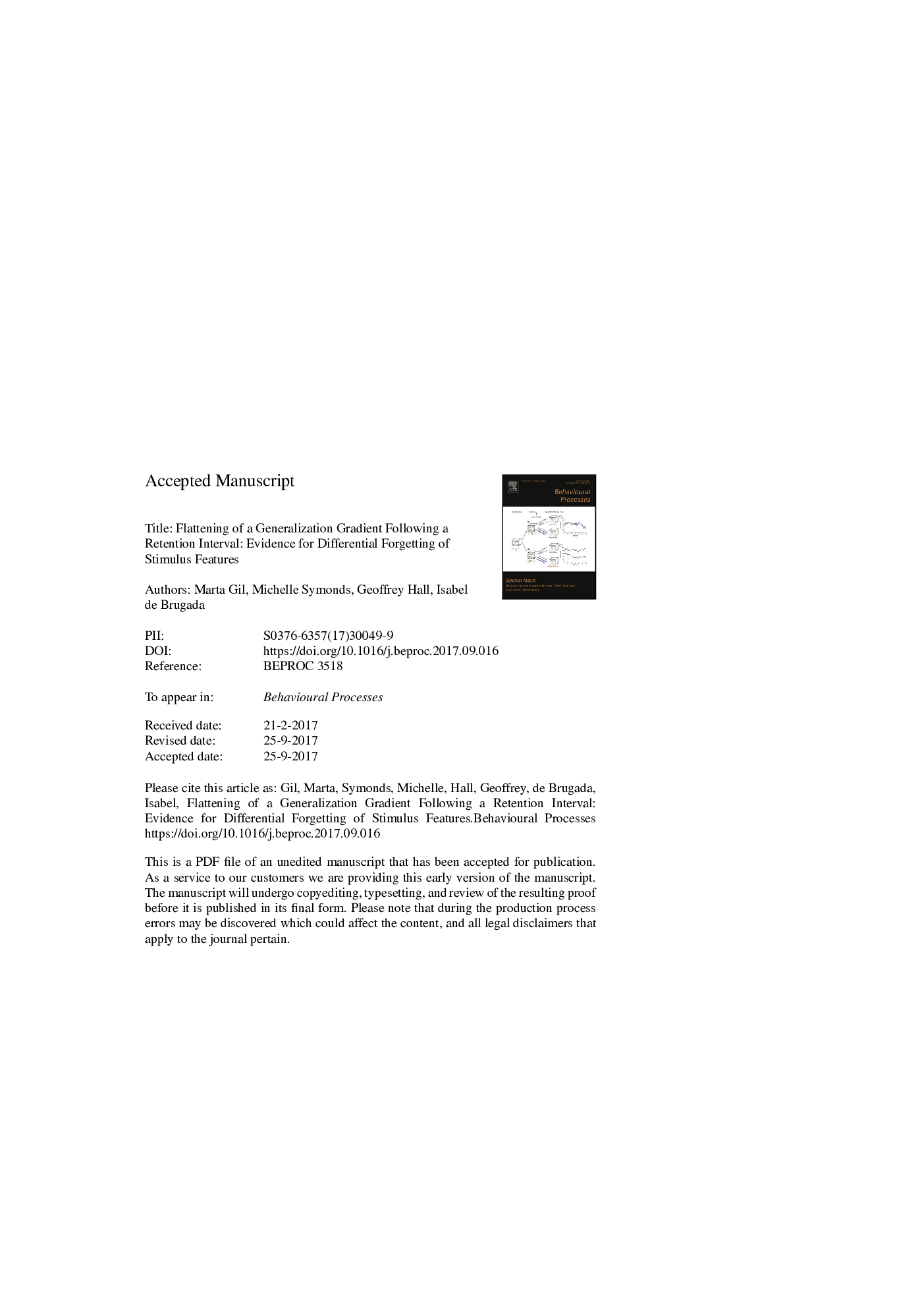| Article ID | Journal | Published Year | Pages | File Type |
|---|---|---|---|---|
| 5539630 | Behavioural Processes | 2017 | 25 Pages |
Abstract
In two experiments, rats received exposure to a compound consisting of a solution of salt plus a distinctive flavor (A), followed by an injection of furo-doca to induce a salt need. Experiment 1, established that this procedure successfully generated a preference for flavor A in a subsequent choice test between A and water. Experiment 2 used this within-event learning effect to investigate generalization, testing the rats with both A and a novel flavor (B). For different groups the interval between the training phase and the test phase was varied. Subjects tested immediately after training showed a steep generalization gradient (i.e., a strong preference for A, and a weak preference for B). Subjects given a 14-day retention interval showed a flattened gradient, a reduced level of preference for A and an enhanced preference for B. These results are interpreted in terms of changes in stimulus representations over the retention interval that act to reduce the effectiveness of the distinctive features of stimuli (the features that are necessary to ensure discrimination between them).
Related Topics
Life Sciences
Agricultural and Biological Sciences
Animal Science and Zoology
Authors
Marta Gil, Michelle Symonds, Geoffrey Hall, Isabel de Brugada,
